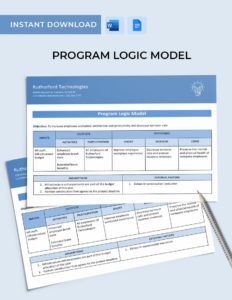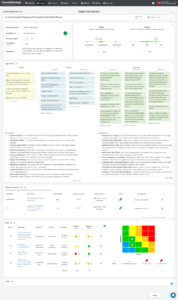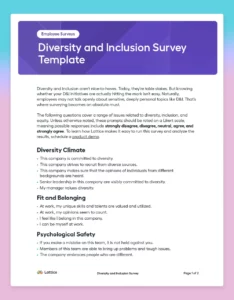A program evaluation logic model template is a tool that helps you to plan and evaluate your program. It visually represents the relationship between your program’s inputs, outputs, outcomes, and impact. This can help you to identify areas for improvement and to track your progress over time.
There are many different program evaluation logic model templates available. The best template for you will depend on the specific needs of your program. However, all logic models should include the following key elements:
Inputs
The inputs to your program are the resources that you use to implement your program. This can include things like staff, funding, and materials.
When identifying your program’s inputs, it is important to be as specific as possible. For example, instead of listing “staff” as an input, you might list “two full-time staff members and one part-time staff member.” This will help you to more accurately track your program’s resources and to identify areas where you may need additional support.
Outputs
The outputs of your program are the products or services that you produce. This can include things like training materials, workshops, and events.
When identifying your program’s outputs, it is important to be as specific as possible. For example, instead of listing “training materials” as an output, you might list “a 10-hour training manual and a 2-hour online training module.” This will help you to more accurately track your program’s progress and to identify areas where you may need to make adjustments.
Outcomes
The outcomes of your program are the changes that you expect to see as a result of your program. This can include things like increased knowledge, skills, or behaviors.
When identifying your program’s outcomes, it is important to be as specific and measurable as possible. For example, instead of listing “increased knowledge” as an outcome, you might list “participants will be able to correctly answer 80% of questions on a post-test about the program’s content.” This will help you to more accurately track your program’s impact and to identify areas where you may need to make adjustments.
Impacts
The impacts of your program are the long-term changes that you expect to see as a result of your program. This can include things like improved health, increased economic stability, or reduced crime.
When identifying your program’s impacts, it is important to be as specific and measurable as possible. For example, instead of listing “improved health” as an impact, you might list “participants will have a 10% reduction in their blood pressure after completing the program.” This will help you to more accurately track your program’s impact and to identify areas where you may need to make adjustments.
Using a program evaluation logic model template can help you to plan and evaluate your program more effectively. By visually representing the relationship between your program’s inputs, outputs, outcomes, and impact, you can identify areas for improvement and track your progress over time.
There are many different program evaluation logic model templates available. The best template for you will depend on the specific needs of your program. However, all logic models should include the following key elements: inputs, outputs, outcomes, and impacts.


